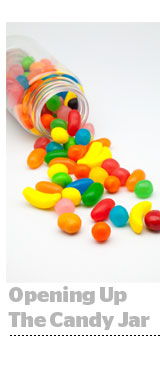 Google is cracking open the gates on its AdWords demand. Its giant pool of search buyers will be able to dip into other exchanges when they need to find a user for retargeting campaigns.
Google is cracking open the gates on its AdWords demand. Its giant pool of search buyers will be able to dip into other exchanges when they need to find a user for retargeting campaigns.
The move was buried in a blog post about mobile innovation Tuesday. The change makes Google far more open, benefiting buyers, itself and partner exchanges.
Industry reactions were positive, with many expressing pleasant surprise.
“I didn’t think they would do this,” said Chris Reid, CEO and founder of startup Sortable, a sentiment echoed by others. “It’s a good, open move by Google.”
Operative VP of monetization Adam Hecht agreed.
“This is really good for publishers,” he said. “It’s definitely good for Google.”
Fewer walls in any marketplace usually mean it will run more efficiently, said Michael Stoeckel, a publisher operations strategist with Prohaska Consulting.
Google would make this kind of move only “if you’re confident you will be the winner with less walls,” Stoeckel said.
AdWords buyers benefit from this change because they have a bigger pool to look for small retargeting audiences. European airline SAS drove 20% more conversions at a similar CPA by buying cross-exchange, Google said. Google, of course, would take a cut from this additional spend – but just a cut from one end, not two.
If SAS were to increase spending because it’s finding those buyers on other exchanges, sellers will benefit from that influx, too.
Previously, buyers on the Google Display Network could only buy Google’s supply from publishers that used AdSense or on Google AdExchange. It’s the vintage ad network model, pairing unique demand with unique supply.
For publishers, access to this can’t-get-it-anywhere-else AdWords demand kept them hooked on Google, even as they chafed against its ad server’s restrictions by implementing workarounds like header bidding.
Since many publishers that implement header bidding see Google taking a smaller portion of their inventory, the practice likely reduced the win rate of Google AdWords advertisers in those environments. But those publishers make just a small dent in Google’s overall supply.
There’s some speculation that Google may not have the publisher connections it needs on mobile yet. Taking the open route would be faster than buying another mobile exchange (it already owns AdMob) or trying to get mobile publishers to sign up.
“I don’t think they are losing on mobile. They are just not getting inventory as fast as they like,” Reid said.
But Stoeckel disagreed this change had anything to do with Google’s overall reach.
“It’s premature to make that connection,” he said. “It’s in everyone’s interest to have a larger pool to fish for those small audiences, and that’s what’s being solved for.”
He anticipates that publishers might see “positive anomalies in coming days and weeks” because AdWords has been freed to play in outside exchanges.
Sophisticated yield managers may exploit differences in revenue shares they’ve established with various exchanges. Since Google usually takes a 20-point cut on each side, for a total of 40%, Reid said, it may be better to buy AdWords demand through an exchange that only took 10 points, for a total of 30%.
How this change actually plays out is still open for debate, and likely won’t be settled until well after buyers, exchanges and publishers see these budgets flowing through.
AdWords is the largest buyer on Google AdExchange, according to Hecht. But it’s unclear how much of that goes toward retargeting and whether Google would eventually open up all AdWords demand to outside exchanges.
“Google makes you happy when they are an open, transparent company,” Reid said. “But they often haven’t been, and create angst and annoyance. They will get a lot of points for making the move to being more open. But let’s see how much they put on the exchanges.”
Google did not respond to a request for comment in time for publication.













